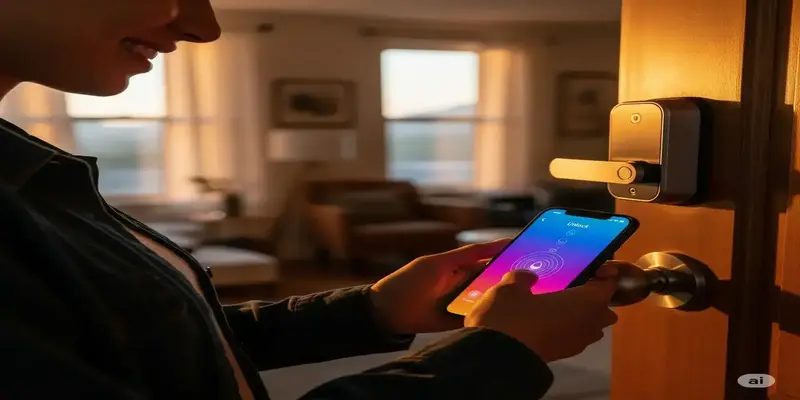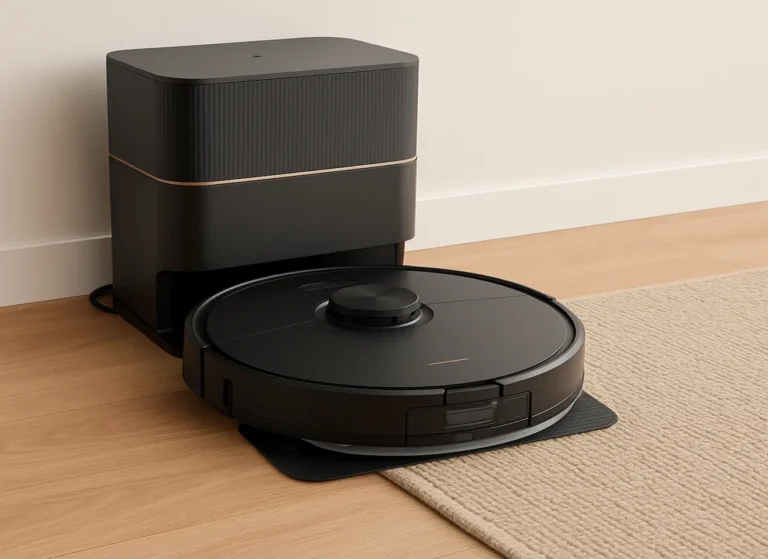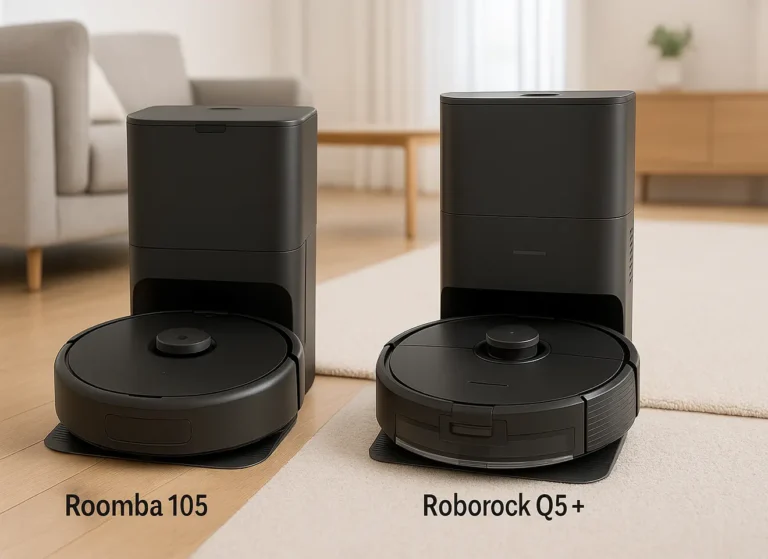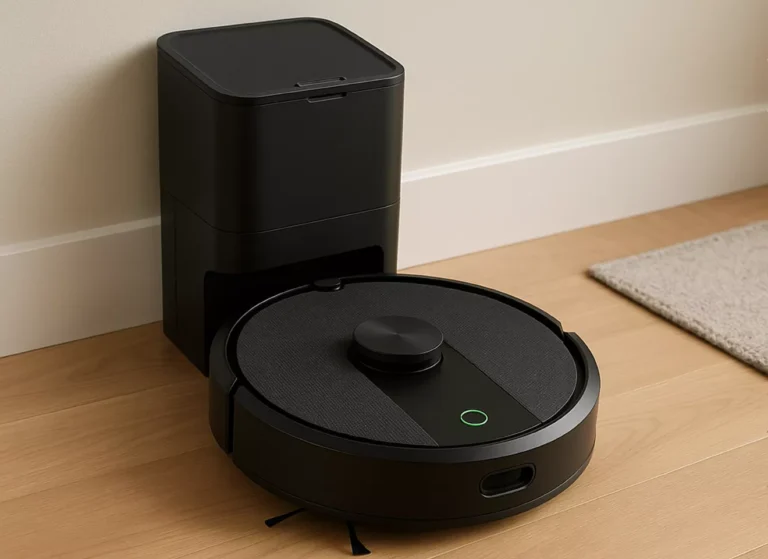Philips Hue A19 Review for Renters (2025): Still Worth the Hype?
In this Philips Hue A19 review, Hue still earns its premium badge in 2025: consistent reliability, excellent dimming and color, and a mature ecosystem that keeps getting better—now with Matter support. For renters, it’s one of the easiest ways to make an apartment feel designed for you without drilling holes or risking your deposit. The catch is price; start small and expand only if you love the experience.
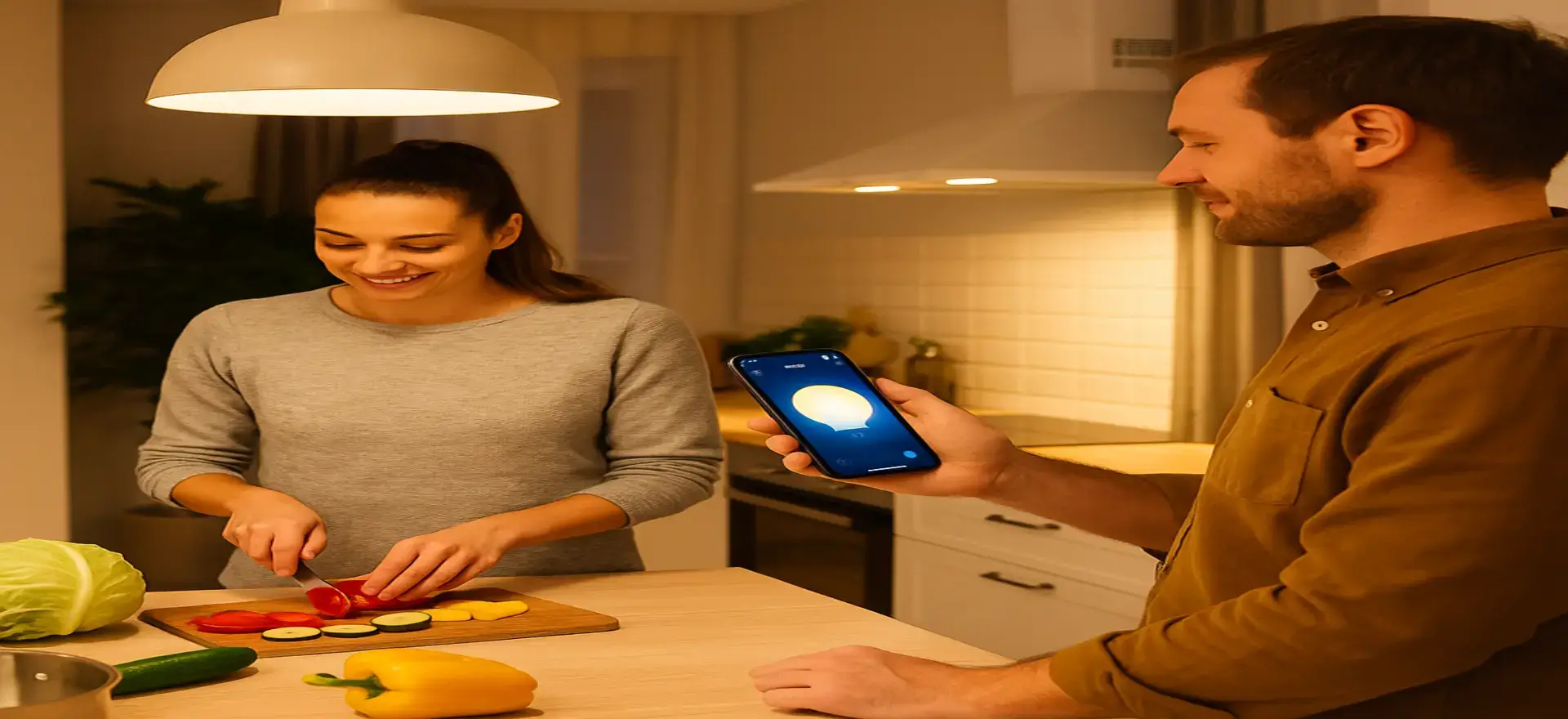
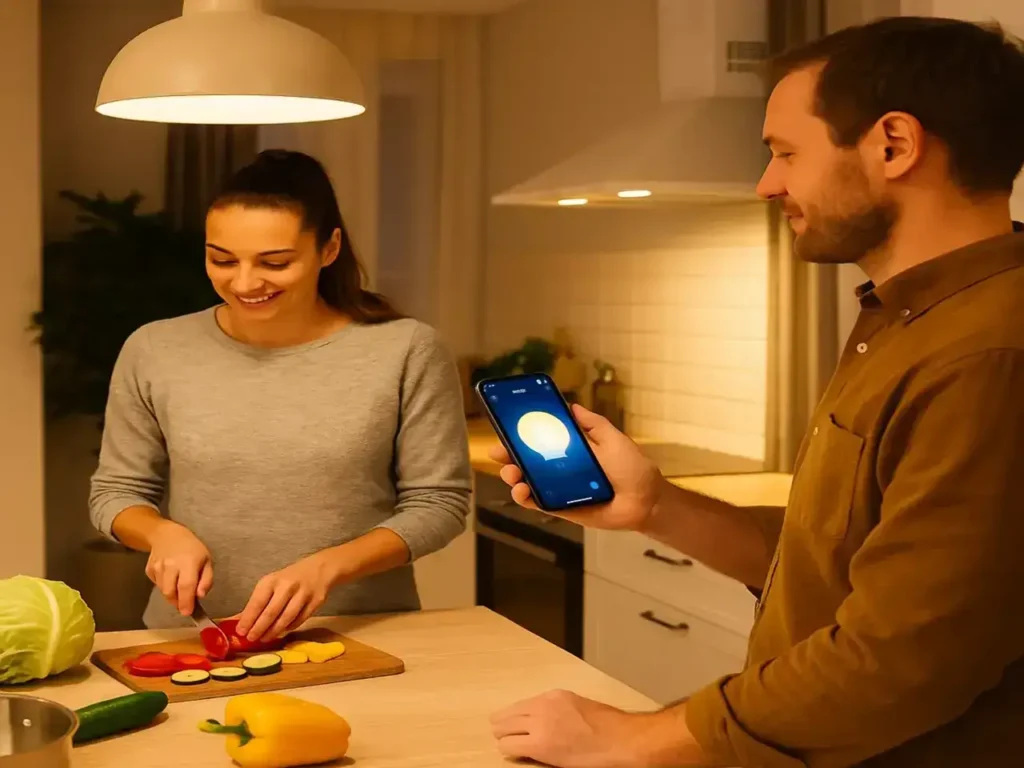
This image has been generated using AI for illustrative purposes only and does not represent an actual product image.
What This Review Covers (and Why Renters Should Care)
If you rent, you live with limits: no drilling through drywall, no swapping hardwired switches, and you’re always one lease away from moving. That’s exactly where Hue shines. The A19 bulbs replace only the bulb, not the fixture; the adhesive dimmer switches pop on/off without marks; the battery motion sensors stick and pull away cleanly. When you move, the whole setup goes in a shoebox and reappears in your next place in under an hour.
This Philips Hue A19 review focuses on what matters in rentals: quick set-up, day-one wins you’ll actually use, and a path to scale that doesn’t break your lease—or your patience.
Setup Paths: Bluetooth vs Hue Bridge (Renter Edition)
Option 1: Start with Bluetooth (no hub).
Perfect for studios and first-timers. You screw in a bulb, leave the wall switch ON, open the Hue app, and pair over Bluetooth. You’ll get on/off, dim, color/temperature control, basic scenes, and voice control through your phone or a nearby smart speaker.
Option 2: Add the Hue Bridge later.
As you add rooms—or roommates—the Bridge unlocks the “real Hue” experience: faster and more reliable commands, multi-room scenes, motion automation (hallway lights that follow you), away-from-home control, and a bigger accessory universe. If your rental has thick walls or congested Wi-Fi, the Bridge’s Zigbee mesh often feels smoother than Wi-Fi-only bulbs.
Want a future-proof angle? Hue supports Matter, the new smart home standard designed to make devices work together more easily across platforms. That interoperability is explained well in this independent Matter overview (neutral read, not a sales pitch).
Renter rule of thumb:
Studio / up to ~4 bulbs / one room → Bluetooth is enough.
1–2 bedrooms / 5+ bulbs / want motion + whole-home scenes → add the Bridge.
Light Quality: Where Hue Still Feels “Premium”
Lighting isn’t just about “bright or not.” Good white light looks warm and cozy at night (think 2000–2700K) and clean and energizing during the day (4000–6500K). Hue’s White & Color Ambiance bulbs nail that range with smooth dimming down to very low levels—useful for night paths and bedrooms without the “flicker” or weird tinted whites you see in cheaper bulbs. For color scenes, Hue’s presets are polished: ambers and candles look believable, pastels don’t turn neon, and party colors pop without eyestrain.
Brightness: A19 color bulbs are typically 800 lumens (about a 60W equivalent)—enough for table lamps and many living rooms.
Dimming: Stable at ultra-low brightness (nice for 1–5% nightlights).
Consistency: When you say “Movie,” multiple lamps fade together at the same speed and color. It feels intentional.
Independent hands-on coverage over the years tends to agree: Hue is rarely the absolute brightest per bulb, but it’s unusually consistent in how scenes and dimming behave across multiple lamps, which is what you notice daily in a small apartment.
Real-World Wins for Renters (You Can Set Up Today)
1) Bedroom night path (no drilling).
One bulb + a battery motion sensor pointed at the door. From 1–5 a.m., motion turns on a low 1% amber for 3 minutes. No blinding yourself on the way to the bathroom, no fighting with hardwired switches.
2) Living room two-scene life.
A floor lamp with one color bulb handles “Bright” (clean white for working or cleaning) and “Evening” (warm 35% for relaxing). A Hue Dimmer stuck to the entertainment unit works like a real switch—no wall wiring.
3) Mini home office.
A desk lamp bulb that flips cool white at 10 a.m. for focus, then warms automatically after sunset so your apartment doesn’t feel like an office at 8 p.m.
4) Roommates without chaos.
Each roommate’s lamp lives in their own “room” in the app; shared areas use a stick-on dimmer so you’re not hunting for phones or barking voice commands over a video call.
5) Move-out day, stress-free.
Peel off sensors/dimmers (adhesive is removable), unscrew bulbs, pack the bridge. Wipe any residue (test cleaners first), and the place looks untouched.
All of this fits neatly into a broader smart home for renters plan: add smart plugs for fans, a speaker for voice control, maybe a battery doorbell with a no-drill mount—no electrician required.
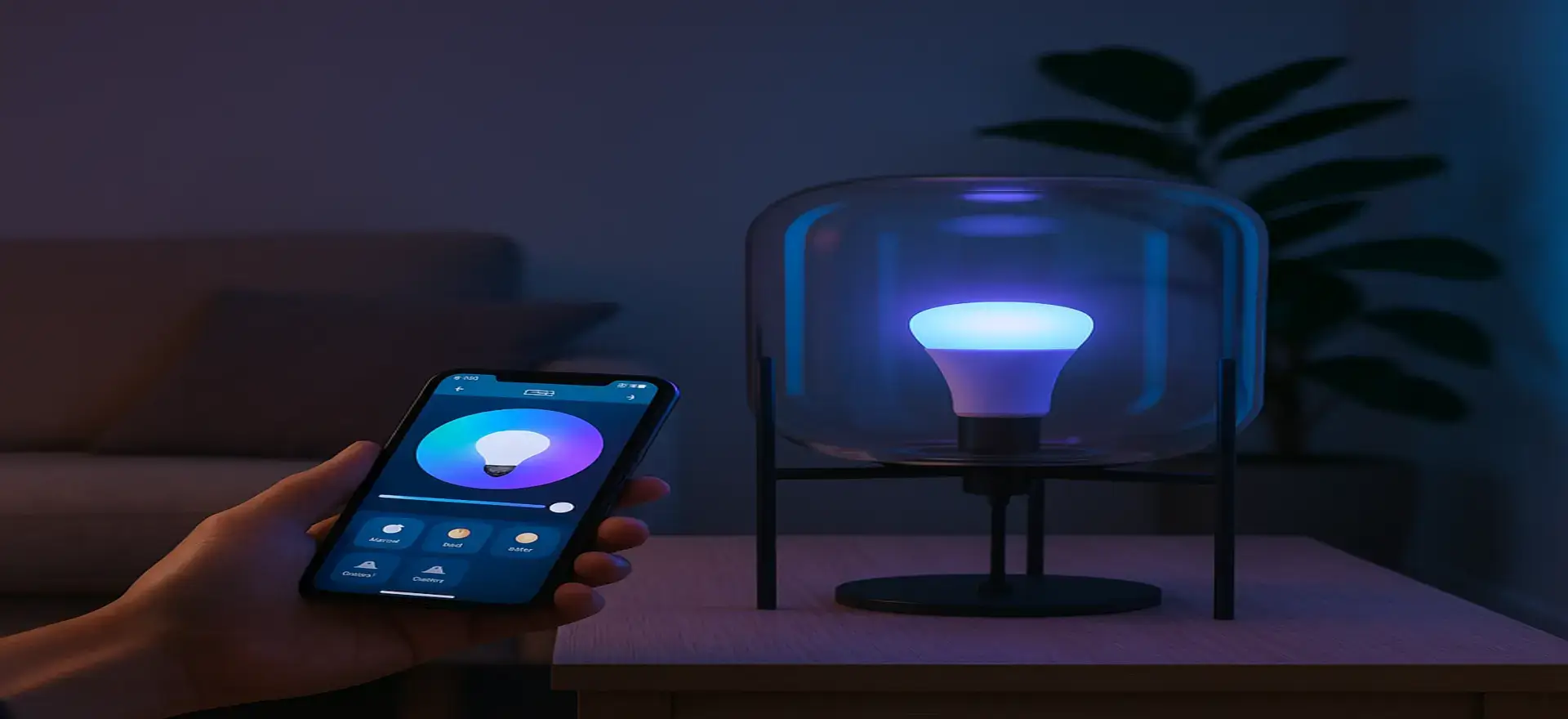
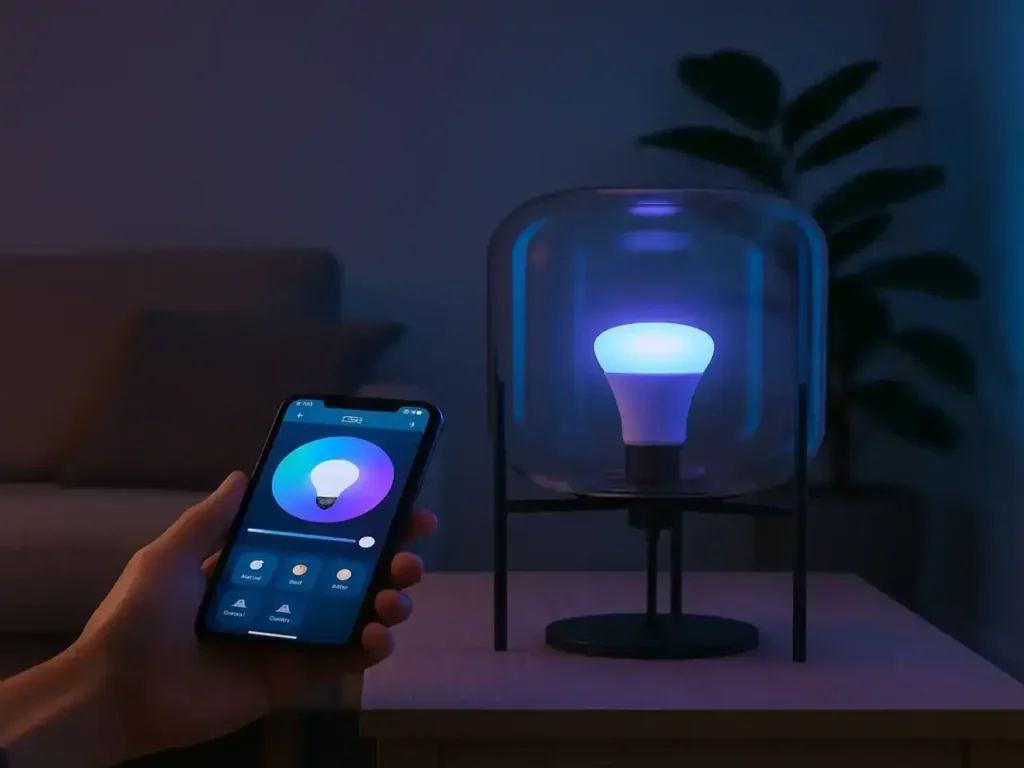
This image has been generated using AI for illustrative purposes only and does not represent an actual product image.
App & Automation: Simple First, Powerful Later
Hue’s app gives you a clean on-ramp: rooms, lights, scenes. Over time, you can layer schedules (sunrise/sunset), motion behaviors (dim at night, brighter in the evening), and presence-based automations. The best part is that you can start simple—two scenes and one dimmer—and only add complexity when it’s actually useful.
Scenes that feel human: “Read,” “Relax,” and “Concentrate” look good out of the box; tweak and save your own.
Timers & routines: Fade to warm at bedtime, brighten for a morning workout, flip the desk lamp to focus at set hours.
Presence & away mode: With the Bridge, lights can mimic occupancy—useful in ground-floor rentals.
Integrations (and What Actually Matters)
Hue works with Alexa, Google Assistant, and Apple Home; with Matter, it should keep playing nicely even as your mix of devices evolves. Practically, for renters, that means:
Voice commands “just work” more often, and multi-room commands execute consistently.
Apple Home fans get tight, local control through the Bridge.
Hue remotes/sensors remain the secret sauce: stick-on controls make a rental feel hardwired without touching a wall box.
Philips Hue vs The Competition (Renter Lens)
LIFX Color (Wi-Fi, often brighter models).
Pros: some bulbs hit ~1100 lumens; no bridge. Cons: heavier Wi-Fi footprint in small apartments and mixed track records for reliability at scale. If you only want one very bright lamp, LIFX can be great; across a whole rental with roommates and flaky Wi-Fi, Hue usually feels calmer.
Wyze Bulb Color (budget).
Pros: low price, bright, improving app. Cons: limited HomeKit support, smaller accessory ecosystem, and long-term updates can be less predictable. If budget is tight, Wyze is a solid way to light a room or two; for a multi-room, many-year setup, Hue’s cohesion wins.
Kasa / TP-Link (Wi-Fi, white or tunable white).
Pros: inexpensive, reliable for basic on/off/dim. Cons: fewer color options, fewer accessories, and less elegant scene control. Great for a lamp or two; not as magical for ambience.
Bottom line: cheaper brands can look bright and colorful on day one; Hue still feels more polished on day 365, especially in a rental where “it just works” matters more than spec sheets.
Price & Value: How to Buy Hue as a Renter
Start with 2–4 bulbs total. Cover your highest-impact lamps first (living room + bedside).
Grab a dimmer remote before a second color bulb; physical controls change how the apartment feels.
Add the Bridge when you outgrow Bluetooth: multi-room scenes, motion in hallways, away mode.
Look for multipacks and seasonal promos. Per-bulb cost drops a lot.
Avoid one-off impulse colors. Curate a few scenes you love, and keep the rest simple.
You’re not committing to a forever home; you’re investing in portable ambience you can rebuild quickly after every move.
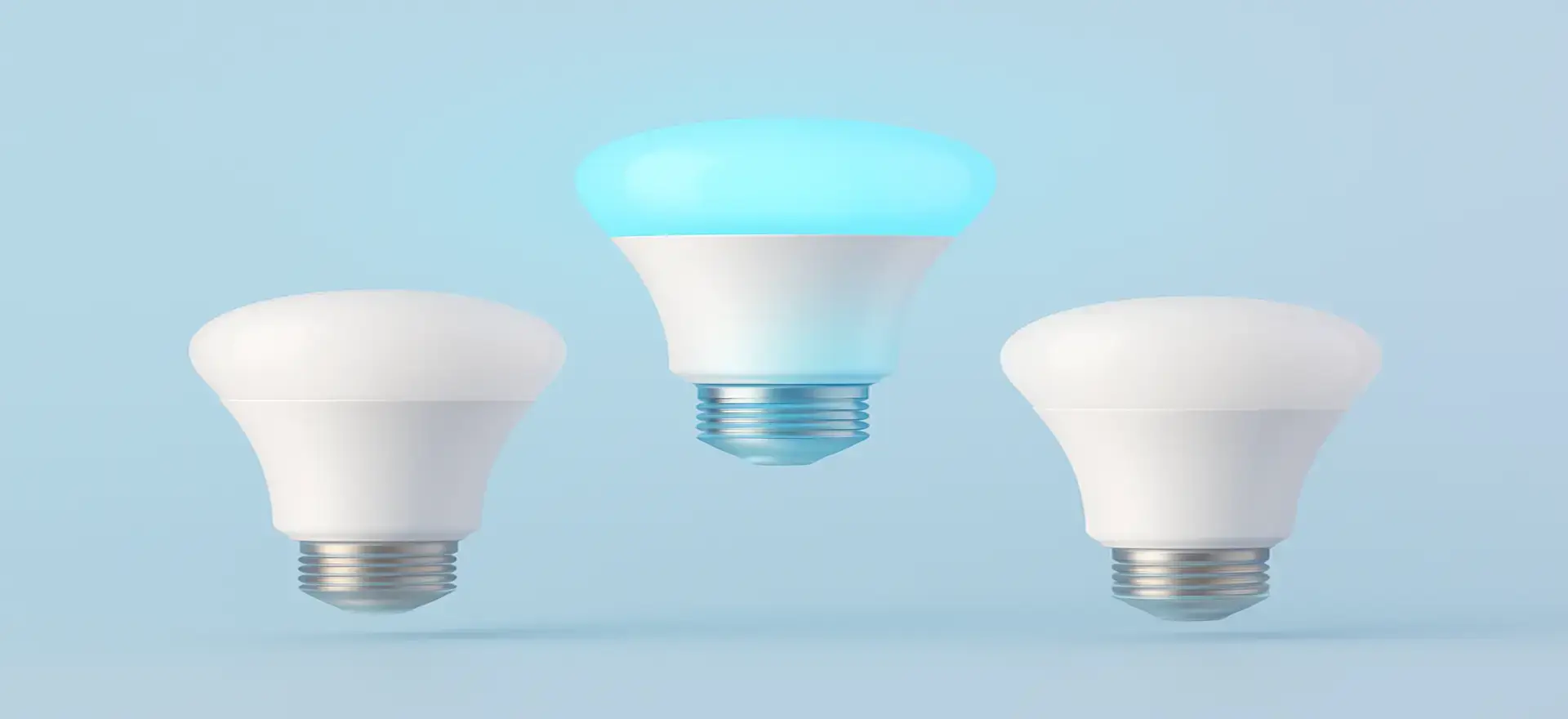
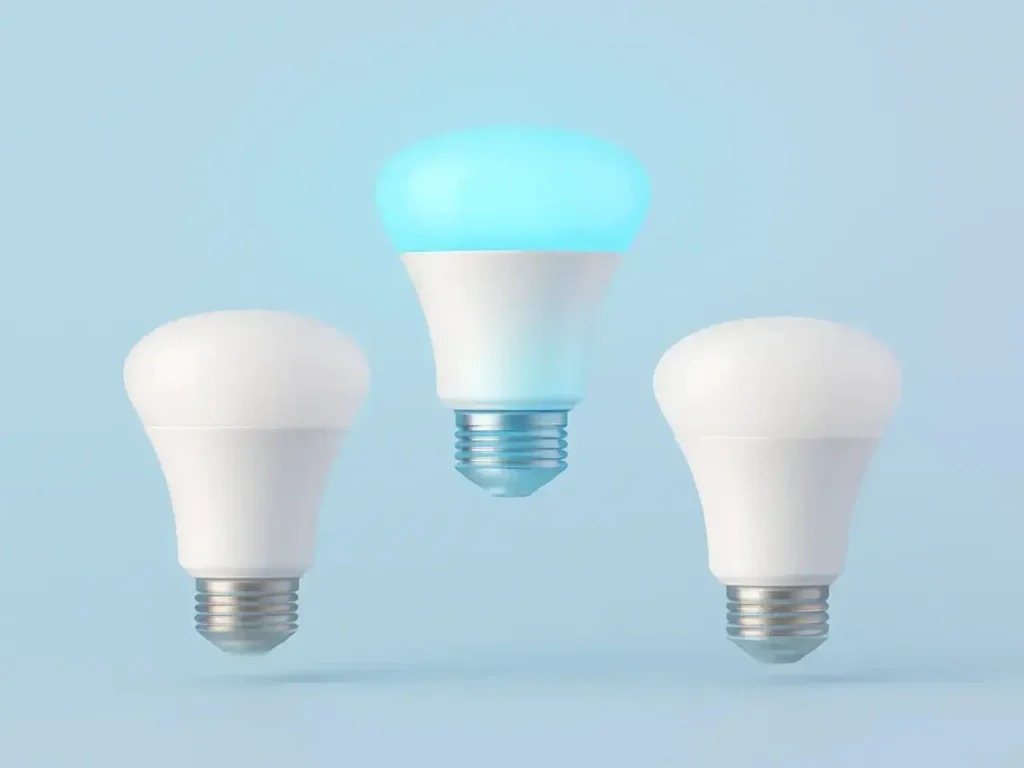
This image has been generated using AI for illustrative purposes only and does not represent an actual product image.
Privacy, Safety, and Reliability
Local control: With the Bridge, much of the logic runs locally—helpful during internet hiccups.
No microphones in bulbs: Voice lives with the speaker you choose.
Routine hygiene: Review which apps/skills you actually use and prune the rest.
Power quirks: Old buildings + loose outlets can cause flicker; a snug lamp socket and leaving switches ON solves most mystery failures.
Troubleshooting the Annoyances (Fast Fixes)
“My lights won’t respond.” Make sure the physical switch remains ON; power-cycle the lamp; in Bluetooth mode, keep your phone close.
“Scenes are out of sync.” Group bulbs properly by room/zone and trigger scenes from the room level; Bridge improves consistency.
“Motion feels jumpy.” Angle the sensor slightly down and lower sensitivity at night; add a longer “no motion” delay for bathrooms.
“Wi-Fi seems unstable.” Remember, Hue bulbs run Zigbee—good! If you’re using Wi-Fi accessories from other brands, keep them on 2.4 GHz and give your router distinct SSIDs for 2.4/5 GHz to reduce roaming weirdness.
Moving Day Playbook (Zero Deposit Drama)
Screenshot your favorite scenes and label rooms in the app.
Pop off dimmers and sensors; remove adhesive slowly, then wipe residue (test cleaner first).
Bridge last: keep it plugged in until the end so lamps still respond while packing.
Rebuild fast at the new place: bridge → bulbs → remotes → sensors → scenes.
Verdict: Is Hue Still Worth It for Renters in 2025?
If you want a lighting setup that feels designed—not hacked together—Hue is still the move. You pay more, but you get reliable dimming, cohesive scenes, responsive controls, and an ecosystem that keeps growing (Matter, refined remotes, smart sensors). For a renter, that translates to a home that matches your day without drilling or begging your landlord.
Used thoughtfully—two bulbs, a dimmer, and a motion sensor—Hue makes a rental yours in a weekend. Scale up only when the basics truly improve your day. That’s the balanced take of this Philips Hue A19 review: premium where it counts, portable when it matters.
For a broader plan that ties lights into plugs, speakers, and more, see our guide to a complete smart home for renters.
FAQ
Do I need the Hue Bridge to start?
No. You can use Bluetooth for a small setup. For multi-room scenes, motion automations, and away control, the Bridge is worth it.
Are Hue bulbs compatible with Apple Home?
Yes—along with Alexa and Google. Matter support helps maintain broad compatibility going forward.
Will bulbs work if someone flips the wall switch off?
No. Keep the switch ON so the bulb has power; use the Hue Dimmer or voice/app to control lights.
Are cheaper bulbs “good enough”?
For a lamp or two, sure. For a whole apartment with scenes and motion, Hue’s polish and stability usually win.
Is this renter-friendly to move?
Totally. Unscrew bulbs, peel off remotes/sensors, and pack. Rebuild at the new place in minutes.
Related posts:
- What Nobody Tells You About the Kasa HS103: Renter Review (2025) What Nobody Tells You About the Kasa HS103: Renter Review...
- amazon echo dot: the ideal gadget for renters (2025 amazon echo dot: the ideal gadget for renters (2025) by...
- Why You Need a Govee Water Leak Detector Under Your Sink (A Renter’s Guide) Why You Need a Govee Water Leak Detector Under Your...
- Forget Everything Else: The Ultimate August Wi-Fi Smart Lock Guide for Renters. by EasySmartHomeGuide Editorial Team — Updated 3 September, 2025 Forget...


